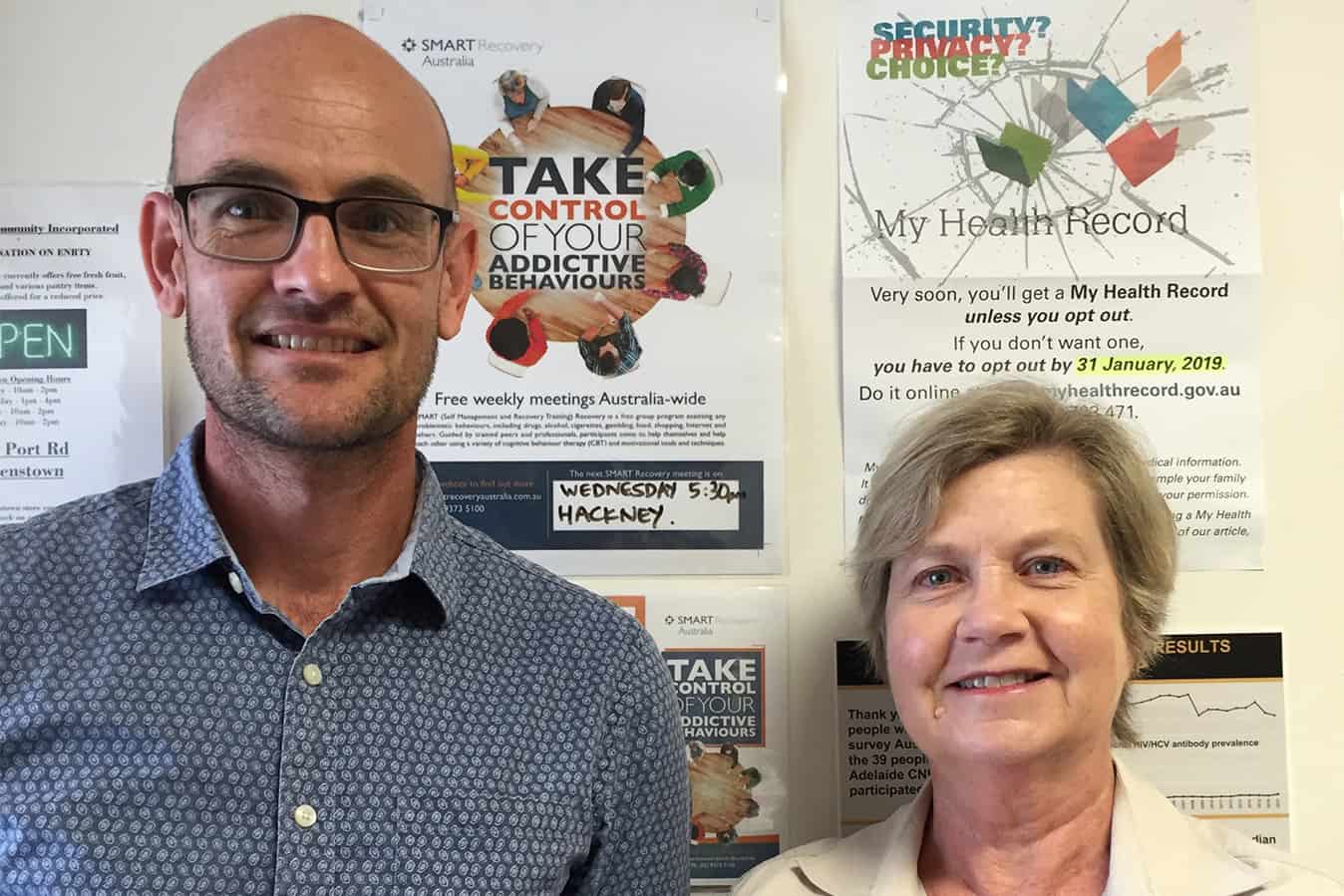A South Australian nurse-led community service has improved access to care for people with hepatitis with those treated outside of hospital increased from 10% to 75% in two years.
The Central Adelaide Local Health Network (CALHN) Viral Hepatitis Nurse-led Community-based Hepatitis C Treatment Service was recently awarded the Out of Hospital Strategies and Care winner in the SA Health Awards 2018.
“Once patients were seen only in the acute setting, this is a nurse-led model which has decreased the burden on the hospital,” CALHN viral hepatitis clinical nurse consultant (CNC) Jeff Stewart says.
“We developed a new model, where we’ve incorporated Hep B and have increased access and the numbers of patients with Hep C being seen away from the hospital setting. We have decreased the referrals to the OPD and there has been a reduction in waiting times.”
The free viral hepatitis service provides specialist care to South Australians living with hepatitis B or C. The aim of the nursing program is to increase access to viral hepatitis care through the provision of treatment, support and integrated care in the community.
“Treatments have become more effective with new direct acting antivirals. In the past, it’s been a lot more difficult and required a lot of follow up. Treatment ranged from 6-18 months and it was only a 50-60% cure rate. It’s [the cure rate] now 90% and there is almost no reason to not receive treatment,” Mr Stewart says.
There are seven viral hepatitis nurses in SA who are clinical practice consultants, working with major hospital services, general practitioners and in other primary health care settings to deliver care in the community. CALHN’s two viral hepatitis CNCs Margery Milner and Jeff Stewart have worked at the new service since it started in 2010.
Nurses go out and do the initial assessment, blood work, offer a fibro scan for cirrhosis and liver scarring, look at medications and possible interactions, patient history, and any risk factors for liver disease.
“We can start appropriate treatment and education; case review and follow up with the patient. We do a full blood test at the end of the course of treatment to determine if they are clear of the virus,” Ms Milner says.
The model of care enables nurses to go out to drug and alcohol clinics, Aboriginal health services, homeless shelters and the Street to Home program and to rural areas, including Port Lincoln, Port Pirie, Whyalla and other parts of the state.
“Anywhere where there is a high prevalence of Hep C to get more people on treatment. We improve access for patients who will not come to hospital,” Ms Milner says.
“We are flexible and we are mobile. We do opportunistic screening of patients in the community. Those who live in assisted residential accommodation have a huge failure to attend OPD.”
The aim is to treat those with hepatitis to decrease the burden of liver failure and cancer in the future. The advent of the portable fibro scanner to assess for liver damage has improved access and treatment, says Mr Stewart.
“If its cirrhosis then the liver is scarred for life; but if it hasn’t progressed to cirrhosis, then we can prevent liver failure and liver cancer. If you can prevent that happening, it can prevent the progression to cirrhosis and allow the liver to regenerate.”
As a result of the viral hepatitis nurse-led service, the proportion of patients who started treatment in the community substantially increased from 2016 to 2018.
In 2014, the two CALHN nurses treated 50-60 patients a year, that figure had increased to 350 patients in 2016.
The national target is to eliminate hepatitis C by 2030. SA is one of the leading states in Australia, along with the ACT and Tasmania to meet that target, Mr Stewart says.
“In 2016 target we treated 35% of those patients who needed treatment for Hep C.
We are on target but it’s getting harder. We’ve treated 35% and we’re on to the next lot, but we don’t know who they are yet.
“Our focus is on drug users still injecting; those with complex social situations; those with mental illness; patients who do not access the health service; and those in rural areas.
“We are working with community services, GPs, prisons, and mental health services to get those patients and engage them. It’s a real challenge.”
Any nurses or healthcare providers in the area can refer to the CALHN nurses.
Central Adelaide Local Health Network
Queen Elizabeth Hospital
Margery Milner – Mobile: 0423 782 415 – margery.milner@.sa.gov.au
Jeff Stewart – Mobile: 0401 717 953








